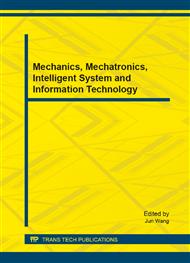p.325
p.332
p.339
p.345
p.350
p.358
p.362
p.367
p.377
Time Bayesian Net Fault Prognostics
Abstract:
As increasing in the number of elements and the complexity of their interactions, fault prognostics faces real challenge to predict faults in a complex system. System fault regularly results from the interaction of component faults performing as logical and timing relationships. We use Bayesian Net to evaluate these logical relations. And the other section of system faults concerns about time sequence of those component faults. Thence, this Bayesian method is expanded to Time Bayesian Net in order to solve this kind of problem. Component fault prognostics is the basis, running dates derived from sensors are applied to analyze status of components in real time. Then a traditional Bayesian Net is constructed according to the mechanism and logical structure of the system. Followed by, exploiting the conclusion from interaction analysis of components, this net is built as a Time Bayesian Net. Afterward, Timed Bayesian Net receives inputs from the outcomes of component fault prognostics, and predicts the type of fault and its time of occurrence through Bayes’ rules.
Info:
Periodical:
Pages:
350-357
Citation:
Online since:
August 2014
Authors:
Price:
Сopyright:
© 2014 Trans Tech Publications Ltd. All Rights Reserved
Share:
Citation:


